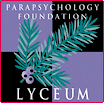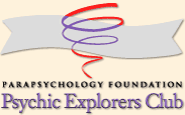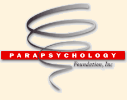 |
 |
| There are many scholarly contributions to parapsychology that do not involve conducting experiments or working with spontaneous cases. The following are some examples from workers in the field. From the old days there are the contributions of Frederic W. H. Myers who analyzed the literatures of psychiatry, psychical research and spiritualism for the purpose of studying the existence and properties of what he referred to as the subliminal mind. His influential work appeared in long articles in the Proceedings of the Society for Psychical Research during the 1880s and 1890s, and in his classic book Human Personality and Its Survival of Bodily Death (London: Longmans, Green, 1903, 2 vols.) Rhea A. White has contributed to parapsychology in many ways. She has been involved in experimental work and in qualitative analyses of spontaneous phenomena. Stanley Krippner has said of Rhea White: The list of her contributions also includes a classic article on “old” versus “new” methods of response to targets in ESP tests that stimulated several innovative procedures. She has written three key articles on the experimenter-subject relationship, and she has brought the insights of feminist psychology and postmodern thought to bear on the development of parapsychology as a science. Two of the bibliographic contributions mentioned by Krippner are Parapsychology: Sources of Information (with L.A. Dale; Metuchen, NJ: Scarecrow Press, 1973), and Parapsychology: New Sources of Information (Metuchen, NJ: Scarecrow Press, 1990). Even allowing for the passage of time, these works still remain useful and a model to follow in the compilation of future bibliographies in the field. Several other workers in the field have made important scholarly contributions through books. A.R.G. Owen gave us an excellent treatise on poltergeists in his Can We Explain the Poltergeist? (New York: Garrett/Helix, 1964), as did Harvey Irwin with his comprehensive Flight of Mind: A Psychological Study of the Out-of-Body Experience (Metuchen, NJ: Scarecrow Press, 1985). The most valuable aspect of these books was their comprehensive examination of the published literature, a feature that has made these books models of scholarship in their particular areas of parapsychology. Historical scholarship is well represented by the work of Alan Gauld. He is the author of The Founders of Psychical Research (London: Routledge & Kegan Paul, 1968), in which the early development and work of the Society for Psychical Research is discussed in a way that no other scholar has surpassed. Other contributions to the history of the field include: Frank Podmore’s old but still useful and influential Modern Spiritualism (London: Methuen, 1902, 2 vols.); Eric Dingwall’s edited four volume anthology of parapsychological phenomena in the mesmeric literature, Abnormal Hypnotic Phenomena (New York: Barnes and Noble, 1967-1968, 4 vols.); and Massimo Biondi’s history of Italian spiritism and psychical research, Tavoli e Medium (Rome: Gremese, 1988). Other authors have contributed to the conceptual aspects of the field. A good example are the books of philosopher Stephen E. Braude in which he not only reviews evidential aspects of the phenomena, but also discusses the conceptual basis behind many assumptions made in parapsychology. Such work has covered different areas of parapsychology, as can be seen in ESP and Psychokinesis (2nd ed., Parkland, FL: Brown Walker Press, 2002), The Limits of Influence (2nd ed., Lanham, MD: University Press of America, 1997), and Immortal Remains (Lanham, MD: Rowman and Littlefield, 2003). Last, but not least, are the comprehensive books that systematically present us with a panoramic view of the field. Today we have Harvey J. Irwin’s An Introduction to Parapsychology (4th ed., Jefferson, NC: McFarland, 2004), available on the PF's on-line store by clicking here), and Massimo Biondi’s La Ricerca Psichica (Rome: Il Minotauro, 2004). In the old days we had the treatises of authors such as René Sudre and his Introduction à la métapsychique humaine (Paris: Payot, 1926), and Fanny Moser's Der okkultismus: Tauschungen und Tatsachen (Munich: Von Ernst Reinhardt, 1935, 2 vols.). |
 |

|
 www. parapsychology. org |
||